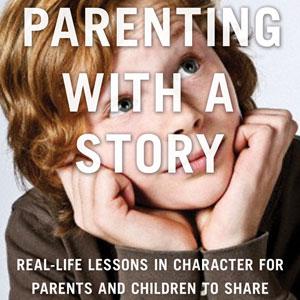
Parenting with a Story Podcast
Paul Smith
Real-life lessons in character for parents and children to share
- 28 minutes 34 secondsFather Behind “Jordan’s Law” Speaks Out
I pushed my way through these kids, and ran over to the ambulance. In the back of the ambulance was my son, Jordan. He was partially conscious and covered in blood. . . The paramedic said he had internal bleeding and had to go to the hospital immediately. . . I jumped out of the ambulance and started asking, ‘What happened? What happened? What happened?’
 Jordan Peisner after attack. December, 2016. KABC-TV.
Jordan Peisner after attack. December, 2016. KABC-TV.
“And that’s when some of the kids ran up to me and said, ‘Look!’ And they showed me a video. It was of my son talking to a friend. And from behind comes this boy, who swings with all his might at my son’s head, and knocks him out. The sound still gives me chills. And down he goes, to the ground. And then you see kids running over — as my son is on the ground, eyes rolled back, and bleeding — and these kids are jockeying for position to take pictures.”
Those are the words of Ed Peisner as he describes what happened to his 14-year-old son Jordan in December of 2016. In what was probably a game of “knockout”, the assailant had planned the attack with accomplices at the ready with cell phone cameras to videotape the shocking event all to generate likes and shares on social media.
And while the attack was obviously criminal, the social media profiteering from it was not. Ed realized that unless someone figured out a way to remove the social media incentive, these horrific acts would continue. And so he did. Ed founded the Organization for Social Media Safety. And together with Marc Berkman, they began lobbying for legal reform.
In one of their first victories, what’s now known as “Jordan’s Law” was passed in the State of California — the first law targeting social-media motivated violence. That law states that if you coordinate with someone to video tape their violent attack and post it on social media that you will be prosecuted as a accomplice.
But in the process of advocating for Jordan’s Law, they learned of a rapidly expanding list of social media-related dangers, like cyberbullying, hate speech, and sexual harassment, which their organization now battles.
Click play above to listen to our conversation and learn how you can protect your own children and help be a part of the solution for others. At the 17-minute mark, Ed and Marc discuss 3 things parents can do right now to protect their kids. Have a listen.
Find out more at https://www.ofsms.org/. And here’s a link to their free safety course: https://courses.ofsms.org/courses/the-buckling-the-social-media-seatbelt-supercourse
Click these links to subscribe to this podcast on iTunes or Stitcher, or Podbean.
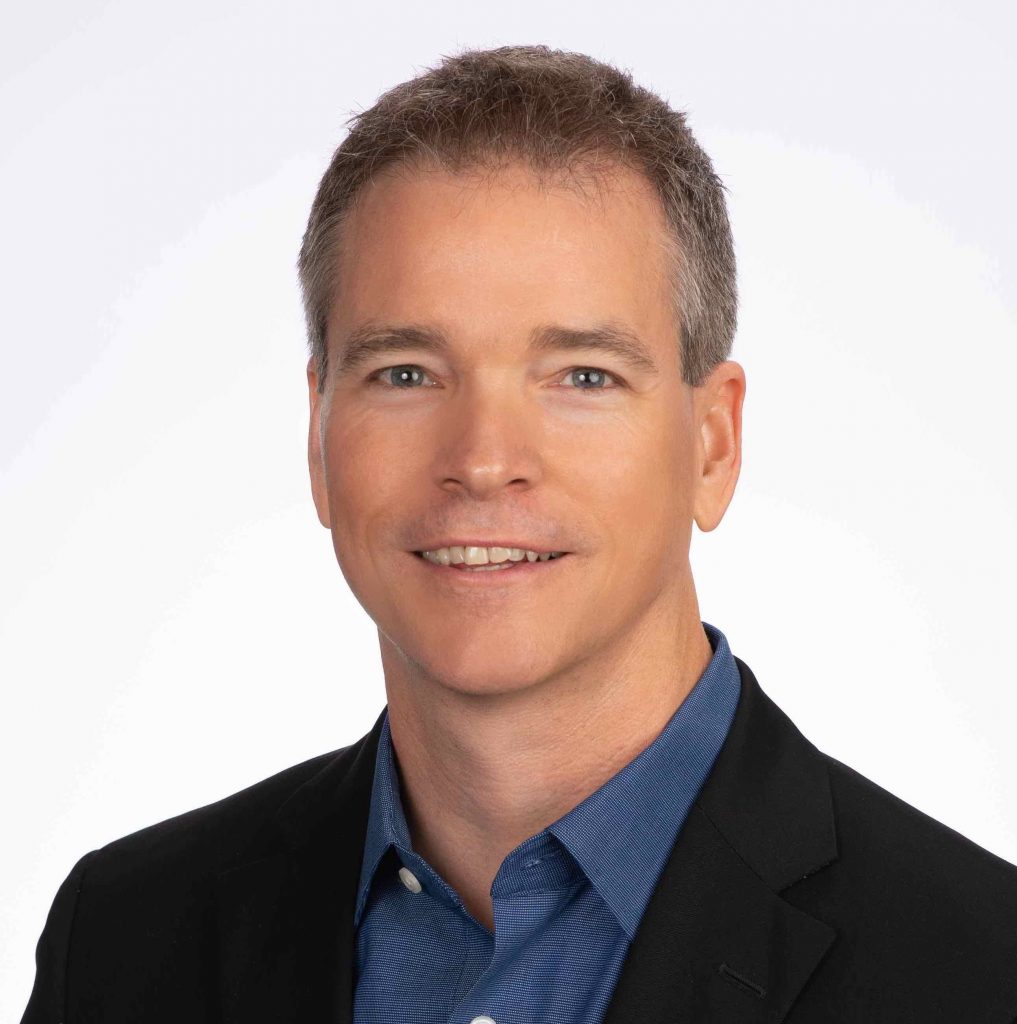
Paul Smith is one of the world’s leading experts on business storytelling, a keynote speaker, and bestselling author.
Connect with him via email here. Follow him on Facebook and LinkedIn.
 15 April 2021, 2:33 pm
15 April 2021, 2:33 pm - 26 minutes 7 secondsThe Spare Room

Imagine you’re driving home from work one night around 8 pm. It’s cold. It’s raining. And there’s a dirty, slushy, melting snow on the ground. You glance out the car window and you see a young girl huddled up on the side of the road. She looks cold, scared, alone, and injured.
You pull over and invite her into your warm car, and take her to a diner for a meal.
She doesn’t speak to you the entire time. She just sits there, staring down into her plate while eating, dripping gray water all over the seat. Your mind races though all of the unthinkable possibilities for what might have lead her to this place in life.
When she finishes eating, still not having said a word, she peels herself off of the plastic seat, gets up, and heads toward the exit. You watch as her frail little back walks away from you. In two more seconds, she’ll be through the door and gone from your life forever.
At that moment, what do you do?
Emily Chang doesn’t have to imagine. She knows. Because this happened to her. At that moment what she decided to do was yell out,
“Where are you going to sleep tonight”?
The girl stopped. Her shoulders quivered a bit. And Emily continued, “I have a spare room.”
That girl became the first of sixteen people over the last 25 years to have been blessed to spend some of the darkest times of their lives in the respite of Emily Chang’s spare room.
An abused child bride. An unwanted boy with hydrocephalus. A girl raised in a brothel. And over a dozen other young people whose lives were changed for the better in Emily’s spare room.

Emily documents their stories in her new book, The Spare Room: Define Your Social Legacy to Live a More Intentional Life and Lead with Authentic Purpose. In the book, she not only shares their unforgettable stories, but the life and leadership lessons we can all learn from them.
In this episode, Emily describes one of those young people lucky enough to spend some time in Emily’s spare room. Click the play button above to hear the story of Devon, a child bride thrown out of her own home.
Emily Chang has worked in leadership positions at Procter & Gamble, Apple, and Starbucks. Today she serves as the CEO of China for the global advertising giant, McCann. You can find Emily at https://social-legacy.com/.
Click these links to subscribe to this podcast on iTunes or Stitcher, or Podbean.

Paul Smith is one of the world’s leading experts on business storytelling, a keynote speaker, and bestselling author.
Connect with him via email here. Follow him on Facebook and LinkedIn.
 11 April 2021, 9:59 pm
11 April 2021, 9:59 pm - 29 minutes 16 secondsTHE App to Help Your Kids Manage a Budget, Track Chores, Earn Their Allowance, and Learn Financial Responsibility
Benny Nachman, CEO of Jassby, joins me to explain how a new APP can both make your home life easier, while teaching your kids about smart money management. read more
28 January 2021, 10:17 pm - 5 minutes 51 secondsHow NOT to Treat Your Mother-in-Law this Thanksgiving
This might be the strangest Thanksgiving most of us ever have, due to the Coronavirus. So, to help you make it a good one, here’s a Thanksgiving lesson in humility that will help you make sure your interactions with family this year are ones you’ll be proud of. . . read more
23 November 2020, 9:14 pm - 4 minutes 25 secondsWhat an 8-Year-Old Learned About Life Working in a Hardware Store During Hurricane Season
Finding out a hurricane is about to bear down on your hometown isn’t the kind of thing most people get excited about, especially when they’re eight years old. But then, most people aren’t like Jayson Zoller. read more
16 October 2020, 2:06 pm - 5 minutes 46 secondsSOCIAL Disobedience: It’s like civil disobedience with your friends and neighbors

The past three weeks have been an almost non-stop parade of protests, all centered around the most recent tragic deaths that didn’t have to happen.
“Yes, that’s terrible. But what can I do?” you might ask. After all, you already changed your Facebook profile for BlackOut Day. And you even attended a Black Lives Matter march. So, you’re good right?
No, not really.
Those things only signal that you’re on the side of making things better. But only on the side. As in, the sideline. If you actually want to make a difference, you need to get off the bench and into the game and that’s a lot harder than changing your profile picture. And it probably means getting knocked around a little. I don’t mean literally. This isn’t a call to violence. And I’m not suggesting you intervene in an active arrest or break the law in an act of civil disobedience (although both of those have their place, too).
Here I’m talking about the kind of thing you can do on a daily basis by just calling out bad behavior when you see it — in your family, friends, and neighbors. And that takes courage. It might mean temporarily straining relationships with people you care about. In the worst situations, you might even lose a friend over it. But in most cases, you’ll end up earning new respect, from others, and for yourself.
Instead of “civil” disobedience, let’s call it “social” disobedience. Because in this case, you’re rubbing up against generally accepted rules of social behavior, like “If you don’t have anything nice to say, don’t say anything at all,” or going along with what everyone else is doing even if you don’t agree with it. Or, more generally, the aversion many of us have to disagree with or offer even the gentlest of criticism to people we know for fear of damaging the relationship.
We need to get over that. True friends will appreciate you being honest and direct with them anyway.
So, here’s an example of what that looks like in the context of racial bigotry. But social disobedience can be used for any worthwhile social change that you support and from any side of the political spectrum. If it’s important to you, let the people closest to you know — especially when they themselves are the problem.
Basketball with Torlick
When Ed was a five- or six-year-old boy growing up in Colorado, he noticed that his was the only house in the neighborhood painted red. All the other houses were either brown or green. When he asked his dad why, his father said very matter of factly, “Because when we moved in, the Homeowners Association told us we could only paint it brown or green. So, naturally, I painted it red.”
Apparently, Mr. Tanguay wasn’t much of a rule follower, at least not with rules he considers unworthy. So you shouldn’t be too surprised at how he responded on another occasion when he received a more unsettling directive from the HOA.
When Ed’s older brother Mark was fourteen, he visited their aunt and uncle, who were on assignment in the Peace Corps in the Marshall Islands, very close to the equator in the western Pacific Ocean. Just prior to returning home, he called his parents to ask if he could bring home a guest for a while. He’d befriended a local boy named Torlick who’d never been to the United States. Mom and Dad agreed, and both Mark and Torlick arrived home in Colorado a short time later.
As it turned out, Torlick liked to play basketball. So one day when Mark, his dad, and Torlick were playing basketball, a member of the same Homeowners Association stopped and had a chat with Dad. The man told him it was okay to have Torlick as a houseguest for a while. But if the boy wanted to play basketball, “it would be best if he didn’t do so between 5 and 6 p.m., when everyone would be driving by on their way home from work.”
For that request to make sense, you have to understand that because Torlick was a native of the Marshall Islands, his skin was many shades darker than everyone else’s in this very Caucasian Colorado suburb. “We wouldn’t want anyone to get the wrong idea about this neighborhood,” the man explained.
Since he was still a young boy, Ed wasn’t privy to most of the conversation, just the part his father shared with him. What Ed does recall vividly, however, was that every day for the next few months, his father came home from work and yelled down the hallway, “Torlick! It’s five o’clock—time to play basketball!”
The Challenge
This week I challenge you to an act of social disobedience. Some time in the next seven days, someone you know will say or do something you think isn’t right. Instead of ignoring it, say something. Do something. You can deliver it with all of the love and kindness you think appropriate. But deliver it. Evil will continue to thrive as long as good people stay silent and on the sidelines.
Click these links to subscribe to this podcast on iTunes or Stitcher, or Podbean.
Source: Parenting with a Story: Real-life Lessons in Character for Parents and Children to Share, by Paul Smith.

Paul Smith is one of the world’s leading experts on business storytelling. He’s a keynote speaker, storytelling coach, and bestselling author.
Connect with him via email here. Follow him on Facebook, LinkedIn, and Twitter.
Sign up for his newsletter here to get one new story a week delivered to your inbox.
 19 June 2020, 8:00 pm
19 June 2020, 8:00 pm - 7 minutes 21 secondsMeeting Kenny Tedford
 I’ve been wanting to write this post for six years. Seriously. This is the day that I get to start telling the world about one of the most amazing human beings I’ve ever met.
I’ve been wanting to write this post for six years. Seriously. This is the day that I get to start telling the world about one of the most amazing human beings I’ve ever met.His name is Kenny Tedford. And he’s the subject of my new book that’s being published today, called Four Days with Kenny Tedford. And despite the title, it’s one I’ve been working on for over six years. So, I’m incredibly pleased to tell you that it’s finally on shelves today.
I can also confidently say that it’s the most meaningful book I’ve ever written, or ever will. And once I explain to you a little about Kenny Tedford, you’ll understand why.
Now, I’m going to have a lot more to say about Kenny and this book in other posts. In fact, I’ll probably bring him on my podcast and let you get to know him personally. But I think what I should do here is let you meet Kenny Tedford the way I met Kenny Tedford, which I explain on the first few pages of the book.
So, if you’ll indulge me, I’m just going to share those first two and a half pages to you so you can see how we met, and get to know a little about Kenny.
Excerpt from the Four Days with Kenny Tedford, page i.
I was sitting in the front row waiting for the next performance to start when I saw him. He was a large man. Sixty-ish. With grey hair encircling a bald head, and glasses thick enough to start a fire on a sunny day.
He walked slowly and deliberately, with a slight list to one side. He made his way down the aisle and sat in the chair next to me.
Following quickly behind him was a twenty-something man with dark hair. The young man pulled one of the empty chairs out of the row, turned it around backwards, placed it directly in front of the older man, and sat down with his back to the stage.
I was intrigued, to say the least.
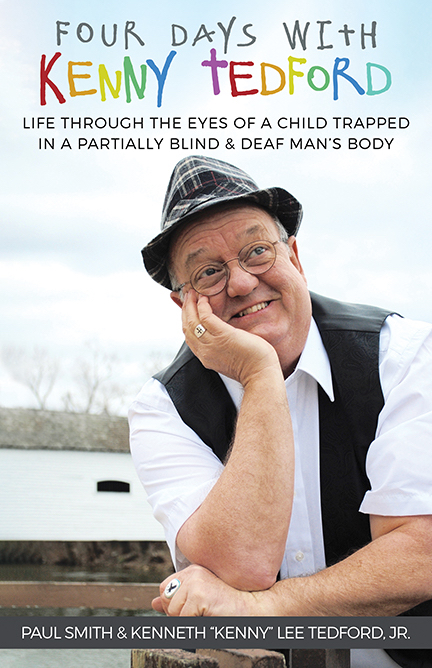 A few minutes later, the next speaker walked on stage and started her performance. The young man, who’d been staring at the older man, silent and motionless since sitting down, suddenly sprang into action. He lifted his hands in front of his chest and began a flurry of cryptic motions that identified him immediately as a sign language interpreter, and the older man as deaf.
A few minutes later, the next speaker walked on stage and started her performance. The young man, who’d been staring at the older man, silent and motionless since sitting down, suddenly sprang into action. He lifted his hands in front of his chest and began a flurry of cryptic motions that identified him immediately as a sign language interpreter, and the older man as deaf.I thought that was pretty ballsy, a deaf guy at a three-day storytelling festival.
I knew immediately I wanted to meet him. So at the next break, I introduced myself. We exchanged a few pleasantries, enough to know that he was an affable sort of guy. But we both had to go to our next set of workshops.
An hour later, I was walking with a tray of food, looking for an empty table, and that same affable fellow walked up to me and asked if I wanted to have lunch with him. I quickly accepted.
We sat at a table by ourselves, his interpreter having been given time off for lunch.
For the next hour, I listened to Kenny Tedford tell his story.
I listened while he spoke with impressive diction, but with the muted tones of a deaf person. And he read my lips, seemingly, as easily as I spoke with them.
But, underneath the telltale tone of his voice, I noticed something else telling. His vocabulary and sentence structure were both charmingly juvenile. As his story unfolded, I started to understand why. His deafness turned out to be only one of many challenges life dealt Kenny Tedford. He was almost blind in one eye, and had poor vision in the other, partially paralyzed on his left side, unable to speak well until the age of ten, and had somewhat limited cognitive abilities, all of which were a result of brain damage suffered at birth. And as if that weren’t enough, in the years since, he’d endured a string of near-fatal illnesses that should have left him dead many times over.
Despite it all, the man sitting in front of me seemed to be the most delightful individual one could ever meet. His temperament and outlook on life and humanity were unquestionably positive in a way I can only describe as childlike. In fact, he struck me as a remarkable combination of Helen Keller and Forrest Gump. Keller, of course, was deaf, blind, and mute. But she was a brilliant thinker and accomplished writer. The fictional Forrest Gump, on the other hand, was a model of physical health once he shook off the leg braces. But he suffered a diminished mental capacity that gave him his childlike charm.
Kenny Tedford, however, had both sets of challenges.
So there I sat, watching this somewhat goofy-looking, old, bald, roly-poly man, smiling at me with enormously distorted bug eyes through his impossibly thick glasses, telling me almost unbelievable stories in the words of a child, but with the voice of a grown man, who’d never properly heard the sound of his own voice.
I was mesmerized.
The hour ended way too quickly. I’d only scratched the surface of Kenny’s life. But it was enough to be fascinated by what I’d heard, and to be frustrated that I didn’t know more.
I wondered how a man in his circumstances could have such a positive disposition. Why isn’t he bitter at life for dealing him such a crappy hand, I wondered. I was pretty sure I would be.
I had so many questions. But it was time for the next session. My chance encounter was over. I didn’t know if or when I would ever see or speak to Kenny Tedford again. But what I did know was that I felt strangely blessed having met him.
. . .
Well, that was June 28, 2012 at the National Storytelling Conference in Covington, Kentucky. I couldn’t have predicted then what would have transpired in his life or mine in the intervening seven years. And certainly not the four days he would eventually spend at my house with my family, sharing his unbelievable life story.
But that did happen. And this book documents not only his incredible life journey, but the impact he had sharing that journey with me and my wife and two young boys over those four days. He came into our house a stranger, but walked out of it as a family member. And I’ve done my best in the book to bring you into our home with us as we listen to Kenny share his stories and reflect on them and the beauty and wisdom they contain.
And I can tell you that I learned more in those four days about courage, faith, family, persistence, kindness, respect, and humility than I learned in the rest of my lifetime before or since.
In fact, in the final chapter we outline a set of those life lessons for people living with all sorts of disabilities and trauma and abuse and the loss of loved ones, as well as another set of lessons for people who love and care for those living with such challenges.
So, in addition to just being an incredible story, we’ve also tried to offer some practical advice from the life lessons Kenny Tedford learned the hard way.
A Personal Note
And finally, on a personal note, as I’m writing these words, on the day this book is being published, it’s two days before Thanksgiving, 2019 — over five years since Kenny spent four days here sharing his life story. And I’m looking forward to tomorrow when I get to drive to the airport to pick up a man who has now become a dear friend, so that my family and I can spend another beautiful Four Days with Kenny Tedford.
Happy Thanksgiving to you and your loved ones.
You can find copies of the book at Amazon and Barnes & Noble and just about anywhere else books are sold. You can learn more about Kenny Tedford at www.kennytedford.com.
Click these links to subscribe to this podcast on iTunes or Stitcher, or Podbean.
Source: Four Days with Kenny Tedford, by Paul Smith.
—
 Paul Smith is one of the world’s leading experts on business storytelling. He’s a keynote speaker, storytelling coach, and bestselling author.
Paul Smith is one of the world’s leading experts on business storytelling. He’s a keynote speaker, storytelling coach, and bestselling author.Connect with him via email here. Follow him on Facebook, LinkedIn, and Twitter.
Sign up for his newsletter here to get one new story a week delivered to your inbox.
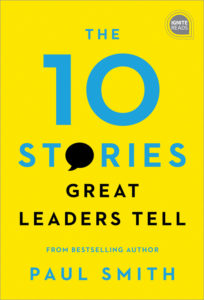

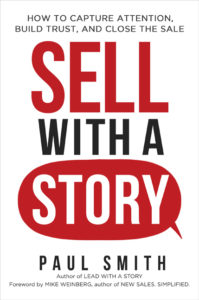
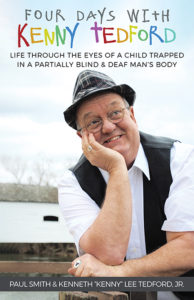
 26 November 2019, 11:20 am
26 November 2019, 11:20 am - 19 minutes 49 secondsAn Angry Therapist’s Guide to a Meaningful Life
 My guest this week is John Kim. He’s a licensed marriage and family therapist and one of the the pioneers of the online life coaching movement.
My guest this week is John Kim. He’s a licensed marriage and family therapist and one of the the pioneers of the online life coaching movement.Interestingly, he calls himself the “Angry Therapist.” It’s essentially an admission that, while he was a licensed therapist and life coach, he was no better off than the people he was helping — and admission that probably made him a more empathetic therapist.
More to the point of our conversation, John is the author of a new book called, I USED TO BE A MISERABLE F*CK: An Everyman’s Guide to a Meaningful Life which we dug right into.
John lays out 66 Dos and Don’ts in the book, some of which are listed below. The ones in bold we actually had time to talk about, and you can see exactly where in the conversation those came up.
John was a lot of fun to talk to. So, please click play above and give enjoy the dialogue. But, be warned, I will fully pronounce the title of his book several times.

John’s 66 Do’s and Don’t include:
- Do be vulnerable
- Don’t be a douche, don’t be a bully, and don’t whine
- Don’t choose passion over purpose (6:00)
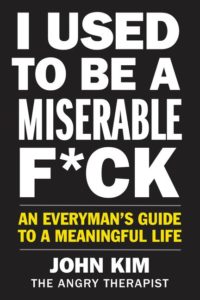
- Do participate in self-care
- Don’t get trapped in your bubble, don’t stay in your comfort zone, and don’t take yourself too seriously
- Do go on man dates, and also do some things on your own
- Do admit when you were wrong or when you don’t know the answer to something.
- Don’t pee in the shower (10:22)
- Don’t stop courting your partner
- Do create your own definition of success instead following the definitions of others.
- Do separate who you are from what you do
- Do make your bed
- Don’t be afraid to fail
- Do try to understand before being understood (11:55)
We also talked about:
- How to respond and not react (13:05)
- Going from Misery to Meaning (15:10), including how he got the name, the “Angry Therapist”.
You can find John at theangrytherapist.com.
Click these links to subscribe to this podcast on iTunes or Stitcher, or Podbean.
—
 Paul Smith is one of the world’s leading experts on business storytelling. He’s a keynote speaker, storytelling coach, and bestselling author.
Paul Smith is one of the world’s leading experts on business storytelling. He’s a keynote speaker, storytelling coach, and bestselling author.Connect with him via email here. Follow him on Facebook, LinkedIn, and Twitter.
Sign up for his newsletter here to get one new story a week delivered to your inbox.




 17 October 2019, 9:49 pm
17 October 2019, 9:49 pm - 25 minutes 21 secondsWhat to Know Before They Go (to College)

My guest today is Dr. Pamela Ellis. She conducts research into the areas of high school of college transition, parent engagement, African-American males in education, and college completion.
As part of that, she’s visited more than four hundred colleges and universities internationally to understand their cultures and their academic and social opportunities available to students. That’s allowed her to help hundreds of young people successfully navigate the college-admissions process, as well as advise universities and school districts as well.
And she’s also the author of the book, What to Know Before They Go: College Edition.
In the podcast, we talked about:
- The college admissions scandal involving Felicity Huffman and Lori Loughlin. (1:30)
- Should kids pay for their own college tuition? (3:20)
- Who should think about taking a gap year? (7:25)
- Dr. Ellis’ top tips for getting ready for college (11:50)
That last one includes ideas like:
Develop independence and self-awareness and self-advocacy
- Start in middle school
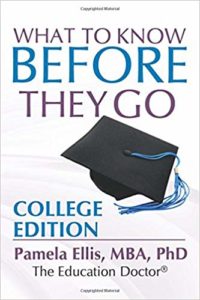
- Learn how to make friends
- Spend time alone and be okay with it
- Less screen time
- Learn how to ask help from a teacher
- Let them participate in overnight programs when young 3-4 days
- Let them handle problems at school, they go to teacher, you don’t
Student owns process for post high school
- Take an interest inventory
- Let them do the application
- Let them research colleges, not mom and dad
- Let them plan college visits
- Let them figure out what they like and want to do
Give a listen to our conversation above. . .
You can learn more about Dr. Ellis at https://compasscollegeadvisory.com/.
Click these links to subscribe to this podcast on iTunes or Stitcher, or Podbean.
—
 Paul Smith is one of the world’s leading experts on business storytelling. He’s a keynote speaker, storytelling coach, and bestselling author.
Paul Smith is one of the world’s leading experts on business storytelling. He’s a keynote speaker, storytelling coach, and bestselling author.Connect with him via email here. Follow him on Facebook, LinkedIn, and Twitter.
Sign up for his newsletter here to get one new story a week delivered to your inbox.




 18 September 2019, 4:18 pm
18 September 2019, 4:18 pm - 36 minutes 54 secondsKids, Sex, and Screens: Upping Your Parenting Game
 If you’re curious whether you should stalk your kids online (spoiler: you should, at least for a while), this is the woman to ask.
If you’re curious whether you should stalk your kids online (spoiler: you should, at least for a while), this is the woman to ask.My guest this week is Dr. Jillian Roberts. She’s a child psychologist, a professor, and the associate dean at the University of Victoria. And she’s also the author of the new book, Kids, Sex, and Screens: Raising Strong, Resilient Children in the Sexualized Digital Age.
I asked Dr. Roberts to explain the problem she’s trying to solve with this book. She explained that when she first started practicing as a psychologist, the clients she had referred to her had trouble wetting the bed, or a failed math test, or a bully on the playground.
But now the challenges she sees are much more acute: children being solicited online, being addicted to screens, and stumbling on sexual material before they’re ready.
As a result, she’s devised what she calls a 7-Point Compass of solutions for parents to deal with today’s challenges. An outline of the compass is below. But please click play above and listen to our conversation as she explains each of them in more detail.
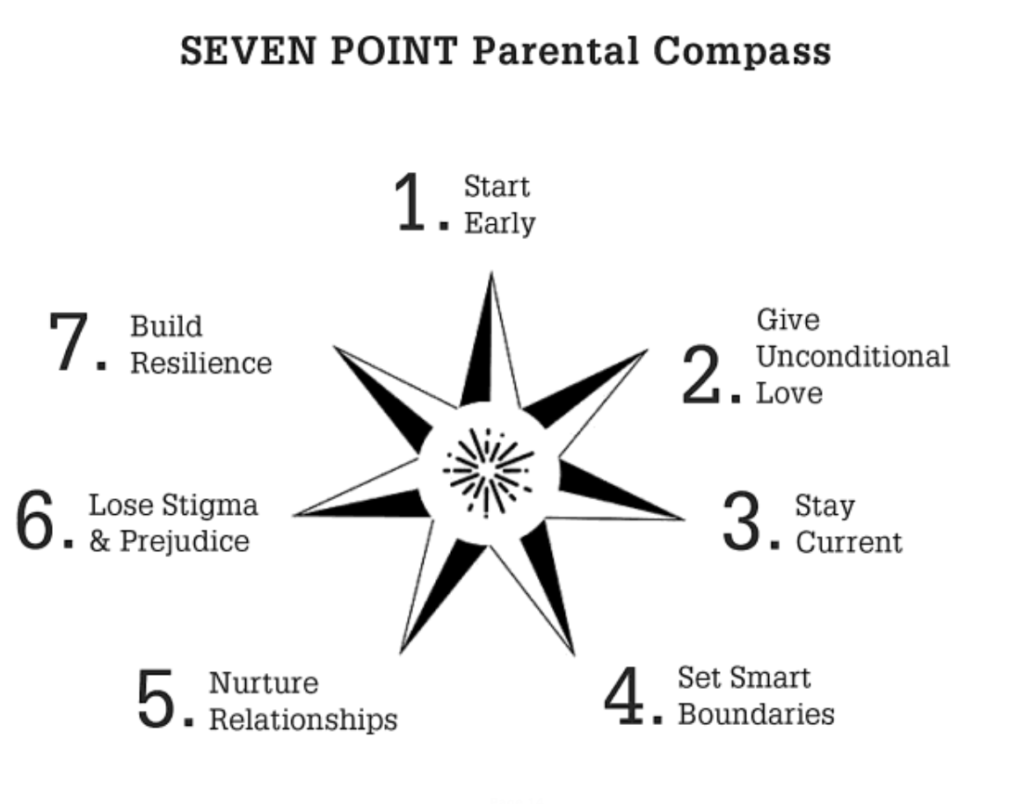
- Start talking early – before they get online. 5 or 6 years old
- Give unconditional love
- Don’t shame them when you find a child being curious
- Don’t react in anger
- Stay current – Be nimble and aware of online influences.
- Get a Snapchat account
- Teach them how to be a good digital citizen
- Follow them online, at least for a while, while they’re learning
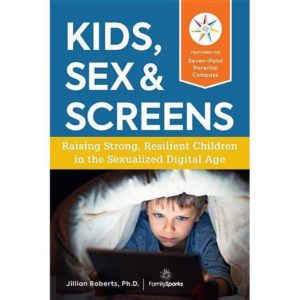 Set smart boundaries
Set smart boundaries
- Self – be true to yourself and your values
- Family – are you violating family expectations?
- Community – what are your community’s standards?
- Online – are you sharing shallow minutia? Purpose of your sharing? Something helpful? Consensual? Advocating for a cause?
- Nurture relationships IRL, not just on-line.
- Lose stigma and prejudice around taboo topics
- Get rid of the awkwardness of talking about sexuality. Be very matter-of-fact.
- Build resilience
See list of 40 top things in the book that parents can do to build their kid’s grit and resilience.
You can find out more about Dr. Roberts and her work at drjillianroberts.com or familysparks.com.
Click these links to subscribe to this podcast on iTunes or Stitcher, or Podbean.
—
 Paul Smith is one of the world’s leading experts on business storytelling. He’s a keynote speaker, storytelling coach, and bestselling author.
Paul Smith is one of the world’s leading experts on business storytelling. He’s a keynote speaker, storytelling coach, and bestselling author.Connect with him via email here. Follow him on Facebook, LinkedIn, and Twitter.
Sign up for his newsletter here to get one new story a week delivered to your inbox.




 27 August 2019, 2:21 pm
27 August 2019, 2:21 pm - More Episodes? Get the App
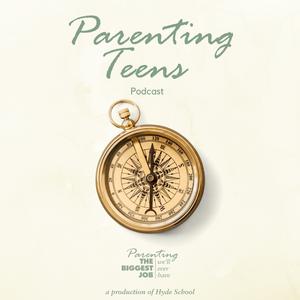 Parenting Teens: The Biggest Job We’ll Ever Have Podcast
Parenting Teens: The Biggest Job We’ll Ever Have Podcast
 The Empowering Parents Podcast - Child Behavior Help The Total Transformation Way
The Empowering Parents Podcast - Child Behavior Help The Total Transformation Way
 Inside The Mind of Teens and Tweens
Inside The Mind of Teens and Tweens
 Positive Parenting | Mr. Dad
Positive Parenting | Mr. Dad
 Conscious Parenting For Confident & Successful Kids // Similar to Focus on the Family, Parental Guidance, TEDTalks
Conscious Parenting For Confident & Successful Kids // Similar to Focus on the Family, Parental Guidance, TEDTalks
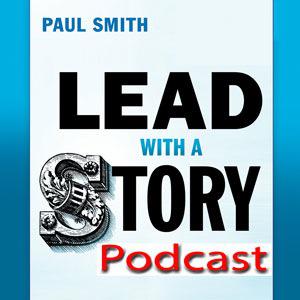 Lead with a Story Podcast
Lead with a Story Podcast
Your feedback is valuable to us. Should you encounter any bugs, glitches, lack of functionality or other problems, please email us on [email protected] or join Moon.FM Telegram Group where you can talk directly to the dev team who are happy to answer any queries.